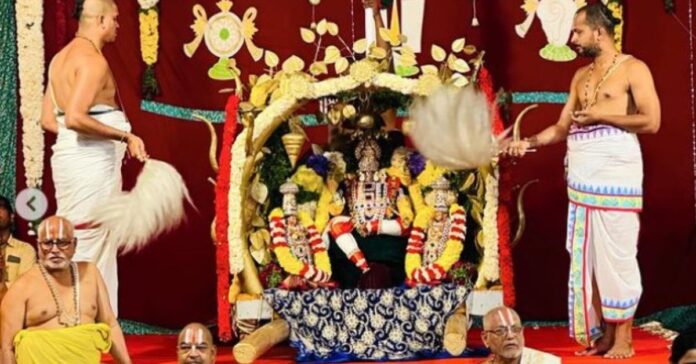Yadagirigutta temple hidden secrets
The Yadagirigutta Temple is an illustrious Hindu temple located in the state of Telangana, India. Nestled on a hillock, this ancient temple is dedicated to Lord Sri Lakshmi Narasimha Swamy, an incarnation of Lord Vishnu. The temple, also known as Lakshmi Narasimha Swamy Temple, is a blend of spiritual fervor, architectural splendor, and cultural richness, making it a significant pilgrimage site for devotees and an intriguing destination for tourists.
The Significance of Yadagirigutta Temple
Yadagirigutta Temple holds immense significance for devotees of Lord Sri Lakshmi Narasimha Swamy. It is believed that the deity manifested in this serene locale to bless His devotees and alleviate their sufferings. The temple’s serene environment, coupled with its mystical aura, offers a unique spiritual experience. The name “Yadagirigutta” is derived from the hillock (gutta) where Lord Yadagirir, a form of Narasimha, is worshipped.
The Legend Behind the Temple
According to legend, sage Yadarishi performed penance in a cave on this hill. Pleased with his devotion, Lord Narasimha appeared in five different forms – Jwala Narasimha, Yogananda, Gandabherunda, Ugra Narasimha, and Lakshmi Narasimha. These forms are collectively worshipped as Pancha Narasimha Kshetram, making Yadagirigutta a unique temple where all five manifestations of the deity can be venerated.
Yadagirigutta Temple Hidden Secrets
While the temple’s spiritual essence is well-known, there are several hidden secrets that add to its mystique and allure.
The Underground Cave
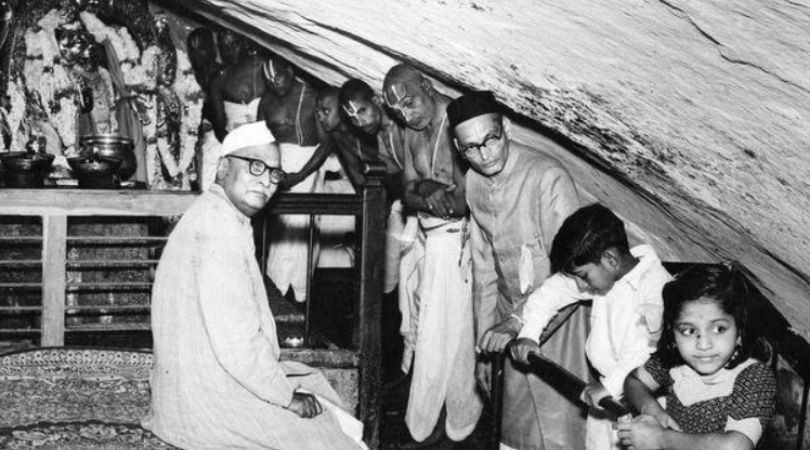
One of the most intriguing aspects of Yadagirigutta Temple is its underground cave. This cave is believed to be the very spot where sage Yadarishi meditated and had the divine vision of Lord Narasimha. The cave is not only a testament to the ancient sage’s devotion but also a significant spiritual site where visitors can feel a profound connection with the divine.
The Sacred Pool
Another hidden gem of Yadagirigutta is the sacred pool, known as Pushkarini. It is believed that taking a dip in this holy water cleanses devotees of their sins and bestows divine blessings. The water in this pool is considered to have healing properties, and many pilgrims make it a point to bathe here before offering prayers at the temple.
Mystical Carvings
The temple walls and pillars are adorned with mystical carvings and inscriptions that depict various forms of Lord Narasimha and other deities. These carvings are not just artistic masterpieces but also carry significant mythological stories and spiritual messages. Each carving has a tale to tell, offering a deeper understanding of Hindu mythology and the temple’s history.
The Secret Passageways
Yadagirigutta Temple is also known for its secret passageways, that are said to lead to various parts of the hill and beyond. These passageways were possibly used by sages and priests in ancient times for meditation and other spiritual practices. While most of these passages are now sealed for safety reasons, their existence adds an element of mystery and intrigue to the temple’s history.
Architectural Marvels
The Yadagirigutta Temple is a splendid example of Dravidian architecture, characterized by its towering gopurams (gateway towers), intricately carved pillars, and majestic vimana (tower above the sanctum).
Dravidian Style Architecture
The temple’s architecture follows the Dravidian style, which is prevalent in South Indian temples. This style is marked by pyramid-shaped towers, ornate pillars, and elaborate sculptures. The temple’s main sanctum, housing the deity, is an architectural marvel, showcasing the skill and craftsmanship of ancient artisans.
Intricate Sculptures and Art
The walls and pillars of Yadagirigutta Temple are adorned with intricate sculptures and art that depict scenes from Hindu mythology. These sculptures not only add to the temple’s aesthetic appeal but also serve as a medium for storytelling, narrating the tales of divine legends and the greatness of Lord Narasimha.
Pilgrimage Experience
Visiting Yadagirigutta Temple is a profound spiritual journey. The temple’s rituals, traditions, and festivals create a unique and enriching pilgrimage experience.
Rituals and Traditions
The daily rituals at Yadagirigutta Temple are performed with great reverence and devotion. These include the Suprabhata Seva (morning prayers), Sahasranama Archana (chanting of a thousand names of the deity), and the evening rituals that culminate in the Ekanta Seva (putting the deity to rest). Each ritual is a deeply spiritual experience, drawing devotees closer to the divine presence of Lord Narasimha.
Festivals and Celebrations
Yadagirigutta Temple is renowned for its vibrant festivals and celebrations. One of the most significant festivals celebrated here is Narasimha Jayanti, marking the appearance day of Lord Sri lakshmi Narasimha swamy. During this festival, the temple is adorned with flowers and lights, and special rituals and processions are conducted. Other important festivals include Brahmotsavam, Vaikunta Ekadasi, and Mukkoti Ekadasi, each attracting thousands of devotees.
Tourist Tips for Visiting Yadagirigutta
To make the most of your visit to Yadagirigutta Temple, it is essential to plan ahead and be aware of some practical tips.
Best Time to Visit
The ideal time to visit Yadagirigutta Temple is during the winter months (November to February) when the weather is pleasant. Avoid visiting during the peak summer months as the temperatures can be quite high, making it uncomfortable for exploration.
Essential Travel Tips
- Dress modestly, as the temple has a strict dress code for both men and women.
- It is advisable to visit early in the morning or late in the evening to avoid the crowd and heat.
- Carry a water bottle and some snacks, as there are limited food options around the temple premises.
- Be respectful of the local customs and traditions while visiting the temple.
Yadagirigutta Temple Accommodation
There are several accommodation options available near Yadagirigutta Temple, ranging from budget lodges to mid-range hotels. Some devotees prefer staying in the temple’s guesthouses, which offer basic amenities and are located close to the temple.
Nearby Attractions
In addition to the temple, there are several attractions near Yadagirigutta that are worth exploring.
Surendrapuri Mythological Museum
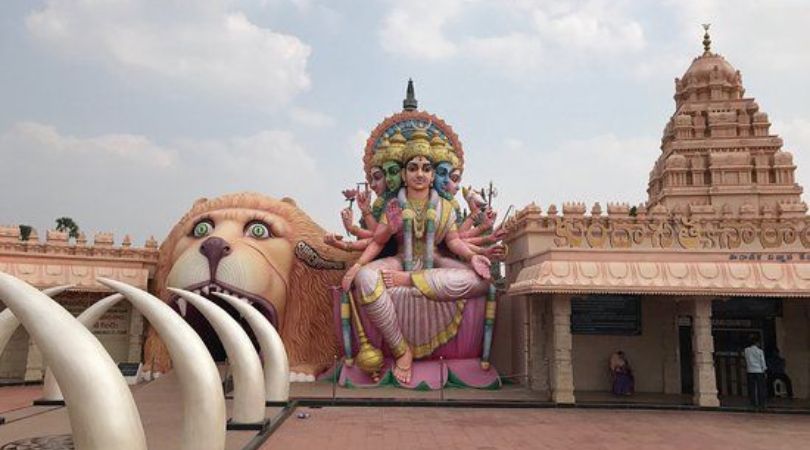
Just a short drive from Yadagirigutta, the Surendrapuri Mythological Museum is a unique attraction that offers a visual feast of Hindu mythology. The museum features life-size replicas of mythological scenes, providing a fascinating insight into ancient Indian scriptures and legends.
Bhongir Fort
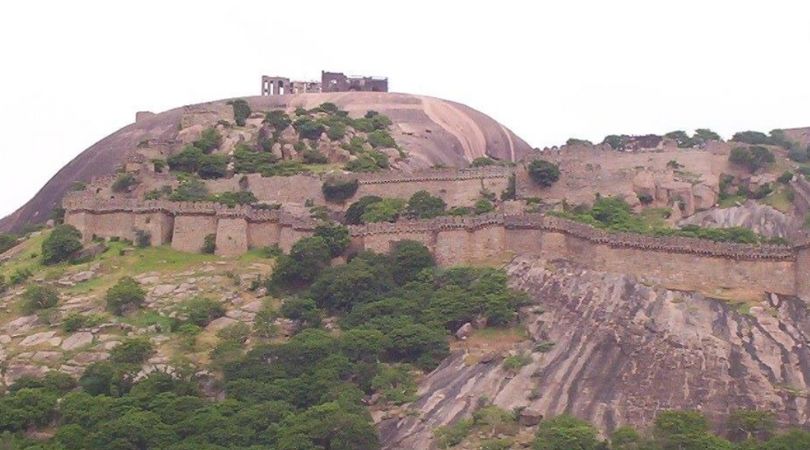
Located about 15 kilometers from Yadagirigutta, Bhongir Fort is a historical monument that dates back to the 10th century. The fort, perched on a massive rock, offers stunning views of the surrounding landscape and is a perfect spot for history enthusiasts and adventure seekers.
Kolanupaka Jain Temple
The Kolanupaka Jain Temple, situated around 20 kilometers from Yadagirigutta, is an ancient Jain shrine that houses a 2000-year-old idol of Lord Mahavira. The temple’s exquisite architecture and serene ambiance make it a must-visit for those interested in exploring different religious traditions.
Swarnagiri temple
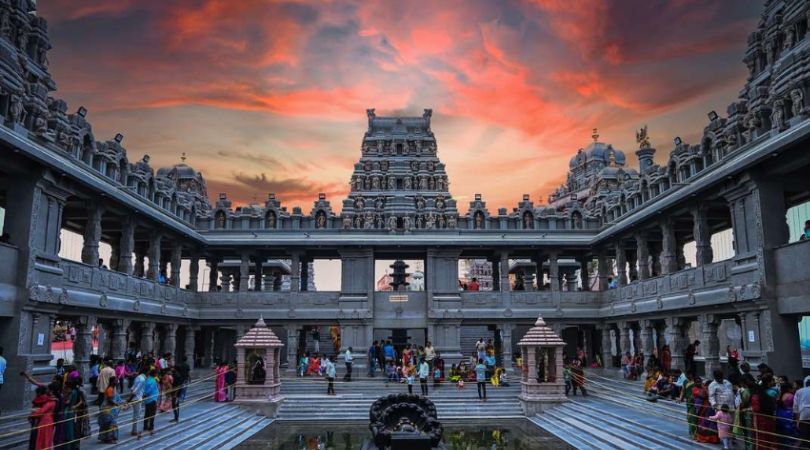
Swarnagiri Temple in Bhongiri, Telangana, is a revered Hindu temple known for its stunning architecture and serene ambiance. Nestled atop a hill, it offers breathtaking panoramic views of the surrounding landscape. Devotees and tourists visit to seek blessings and experience its spiritual tranquility.
Also read: How to Reach Swarnagiri Temple Location & Timings
Cultural Significance
Yadagirigutta Temple is not just a place of worship but also a center of cultural and spiritual activities.
Religious Importance
The temple’s religious significance lies in its association with Lord Sri Lakshmi Narasimha Swamy, who is revered as a protector and a remover of obstacles. Devotees believe that praying at this temple brings peace, prosperity, and divine blessings. The temple’s rituals and practices reflect the rich spiritual heritage of Hinduism.
Spiritual Practices
Apart from the daily rituals, Yadagirigutta Temple is also known for its spiritual practices such as meditation and yoga. Many devotees and spiritual seekers come here to meditate in the serene environment of the temple, seeking inner peace and spiritual enlightenment.
Yadagirigutta temple hidden secrets
The Transformation of Yadagirigutta Temple
Over the years, Yadagirigutta Temple has undergone significant transformation and development to accommodate the growing number of devotees and tourists.
Renovation and Development
The temple has seen several renovation projects aimed at preserving its ancient architecture while enhancing its infrastructure. Recent developments include the construction of new facilities for devotees, such as dining halls, accommodation, and improved access routes. These efforts ensure a comfortable and fulfilling experience for visitors.
Future Prospects
With the ongoing development and increasing popularity, Yadagirigutta Temple is poised to become a major pilgrimage and tourist destination. Plans are in place to further enhance the temple’s facilities and promote it as a center of spiritual and cultural tourism.
Experiences of Devotees and Tourists
The experiences of devotees and tourists visiting Yadagirigutta Temple add to its charm and allure.
Personal Stories
Many devotees have shared their personal stories of miracles and divine experiences at Yadagirigutta Temple. These accounts reflect the profound spiritual impact the temple has on its visitors, reinforcing their faith and devotion.
Visitor Reviews
Tourists visiting Yadagirigutta Temple often leave with memorable experiences and positive reviews. The temple’s serene environment, rich history, and architectural beauty make it a unique destination that leaves a lasting impression on its visitors.
Yadagirigutta Nearby temples
10 famous temples near Yadagirigutta, Telangana:
1. Lakshmi Narasimha Temple, Yadagirigutta (Main Temple)
- Dedicated to Lord Narasimha, this is the primary pilgrimage site.
2. Swarnagiri Temple, Swarnagiri Hills (10 km from Yadagirigutta)
- A stunning hilltop temple dedicated to Lord Venkateswara, offering panoramic views.
3. Sri Uma Maheshwara Swamy Temple, Muchintal (~25 km)
- A beautiful temple dedicated to Lord Shiva and Goddess Parvati.
4. Sri Ramalingeswara Swamy Temple, Ghanpur (~30 km)
- Ancient Shiva temple with intricate Kakatiya-era architecture.
5. Sri Venkateswara Swamy Temple, Hyderabad (~60 km)
- A replica of Tirupati Balaji in Chilkur (Famous for “Visa Balaji“).
6. Sri Keesara Gutta Lakshmi Narasimha Swamy Temple (~40 km)
- A historic cave temple dedicated to Lord Narasimha.
7. Sri Jagannath Temple, Hyderabad (~65 km)
- A replica of Puri Jagannath Temple, located in Secunderabad.
8. Sri Gnana Saraswati Temple, Basar (~120 km)
- One of the few Saraswati temples in India, known for Akshara Abhyasam.
9. Sri Bhadrakali Temple, Warangal (~80 km)
- A powerful Shakti Peetham dedicated to Goddess Bhadrakali.
10. Sri Kaleshwara Mukteswara Swamy Temple, Kaleshwaram (~150 km)
A sacred Shiva temple at the Triveni Sangamam of Godavari & Pranahita rivers.
Conclusion
Yadagirigutta Temple is a treasure trove of spiritual, architectural, and cultural wonders. From its hidden secrets to its vibrant festivals, the temple offers a rich and fulfilling experience for both devotees and tourists. Whether you seek spiritual solace, historical knowledge, or cultural enrichment, Yadagirigutta Temple promises a journey that will leave you enlightened and inspired. Embrace the mystique and magnificence of this sacred site, and uncover the hidden gems that make Yadagirigutta Temple a truly unique destination.
FAQs About Yadagirigutta Temple
A. Yadagirigutta Temple is open from 4:00 AM to 9:30 PM, with breaks for rituals and temple maintenance.
A. Yadagirigutta Temple is well-connected by road and is about 60 kilometers from Hyderabad. It can be reached by private vehicles, taxis, or buses from Hyderabad.
A. The main attractions of Yadagirigutta Temple include the sanctum sanctorum with the deity, the underground cave, the sacred pool, and the intricate carvings and sculptures.
A. Yes, visitors are required to dress modestly. Men are expected to wear dhoti or traditional attire, and women should wear sarees or salwar kameez.
A. There are various accommodation options available near the temple, including guesthouses run by the temple authorities, budget lodges, and mid-range hotels.

